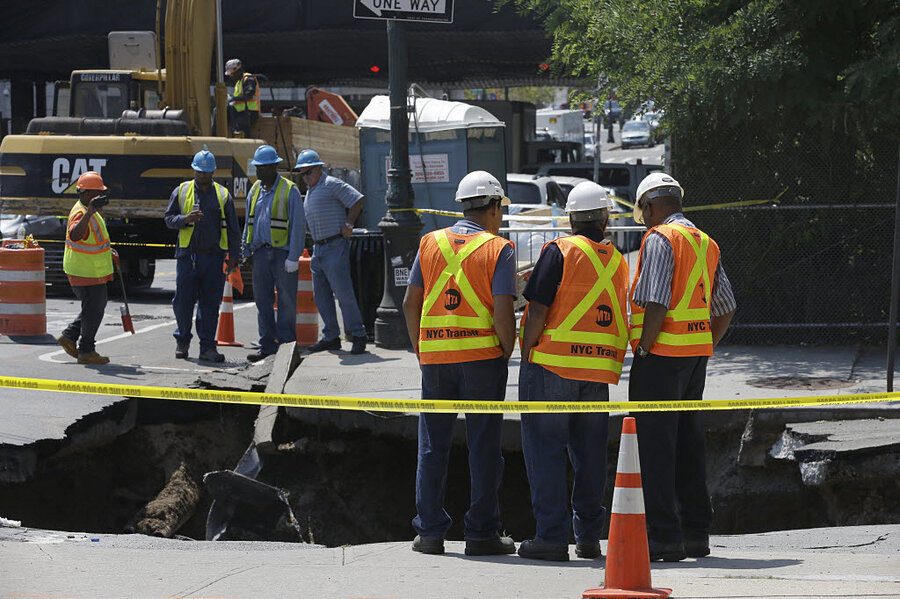A sinkhole grows ... in Brooklyn?
Brooklyn, N.Y. is not very used to seeing sinkholes, but Tuesday morning, roads at an intersection caved in, forming a hole 20 feet wide and 20 feet deep, CBS New York reported.
The Sunset Park collapse was caught on video via Frank Bowman’s rooftop surveillance camera. Although no injuries were reported, Mr. Bowman told WCBS it was a near miss.
"There were cars on it just minutes before," he said. "There was no warning, this thing just happened quick."
Construction under the nearby Brooklyn-Queens Expressway has put more trucks on the local road, reported WCBS 880’s Marla Diamond, causing some to wonder if the extra weight had driven the collapse. But FDNY deputy chief Peter Leicht told CBS2 a leak in a four-foot cast-iron water main was most likely at fault.
"It appears to be some sort of water leak that undermined the road, washed away the earth, and that’s why the street gave way," said Mr. Leicht.
Sinkholes are caused by the interaction of two substances: water and limestone. After a house was swallowed up near Disney World in 2013, the Christian Science Monitor’s Liz Fuller-Wright wrote of "cover collapse" sinkholes:
Limestone dissolves in water, and the more acidic the water, the faster the limestone gets eaten away. What starts as a small hole deep underground can grow bigger and bigger until it's a cave you could walk upright in. Flowing ground water keeps dissolving away the top, sides, and bottom of a limestone cave, enlarging it in all directions. For people living on the surface above these caverns, there's no obvious sign that the ground beneath their feet is being eaten away from below ...
And then a tipping point is reached, and the roof of the cave collapses – caves in, literally – along with everything that had been precariously perched above.
Florida residents are accustomed to sinkholes – there are more than 15,000 reports on file – since a limestone bed underlies the entire state. US Geological Survey data indicates that besides Florida, sinkholes cause the most damage in Texas, Alabama, Missouri, Kentucky, Tennessee, and Pennsylvania.
After a Florida man died in 2013 when the ground under his house collapsed, Business Insider reported, "Luckily for New Yorkers, it's not very likely that a sinkhole would open up in Manhattan's Flatiron district." But Tuesday’s incident was not unheard-of for New York City, particularly for Brooklyn residents.
In April of this year, a fire engine became partially submerged in another sinkhole in the borough, the Daily News reported. Two firefighters suffered injuries trying to lift the truck out of the hole.






